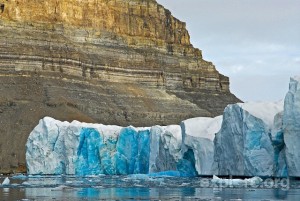
In the far northernmost part of the earth lay ahead the gigantic ice-covered land located at 66° and 32 minutes north Latitude called the Arctic.
Arctic regions include almost the whole part of Canada, United States, Sweden, Norway, Finland, Greenland, Iceland and the whole Arctic Ocean—the subarctic regions. Among the earth’s ecosystems, Arctic region is considered as unique area because of its environment and temperature. The warmest temperature which is fall in the month of July is only 10° Celsius or 50° Fahrenheit. In addition, it is unique in its physical and biological environment and how it functions under this extraordinary condition of the Arctic.
Talking about Arctic we might think this is the region seem without life. This is because of the icy, frozen, treeless place where we can only see an ice mounted-land. However, beyond those human expectations, Arctic region is one of the places blessed with its full abundance of life—from organisms too small for our naked-eye up to the biggest birds, land and marine lives.
Thousands of years ago, Arctic inhabitants called the Inuit people and other native populace still practices the old-aged traditions of the Arctic (using dogsleds for transportation) while absorbing the new technology of hunting and fishing as their way of living. In fact, they welcome all National Science Foundation (NSF) -supported scientists to work within the place to study how these people migrate and interact with this very low freezing temperature, constant darkness and ice-covered ground environment. Natives are mostly established their homes along the coast or on the river banks near to their food sources such as from marine life as agriculture is not possible in the place.
It might be a challenge to live and work in Arctic because of its climate. Just recently, the Arctic shrinkage created a fear to the entire world because of the methane released from the Arctic which is according to them will directly cause damage or global warming since methane is a very potent greenhouse gas.
The two climates in Arctic are the icy winter and the chilly summer. Most of the time the annual rainfall comes in a form of snow together with the heavy blowing winds in which most of the part of the Arctic receives it. According to the latest record, the average winter temperature is as low as -40°C. However, its coldest ever temperature is approximately below -60°C or -90°F.
The sun shines in the Arctic in the whole half year round and the night occur in the other half year depending as to where the pole is facing—as the earth revolves around the sun.
Despite the very low temperature and constant darkness evolving in the Arctic, the place attracts tourists coming from different part of the world to live and visit because of the latest discoveries of oils, minerals and diamonds found in the area.
Recommended Articles:

